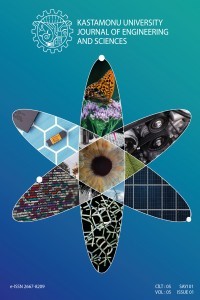Evaluation of a Municipal Water Distribution Network Using waterCAD and waterGEMS.
Evaluation of a Municipal Water Distribution Network Using waterCAD and waterGEMS.
Water Distribution System, WaterCAD WaterGEMS, Evaluation,
___
- [1] Dhumal, J.R., Danale, M.S., & Jadhav, G.H. (2018): Design of Continuous Water Supply System by using WaterGEMS. 8th National Conference on ‘Emerging Trends in Engineering, Kolhapur, India (NCETET-2018).
- [2] Ayanshola, A.M., Sule, B.F., & Salami, A.W. (2013): An Optimization Model for Sustainable Water Distribution Network Design. Journal of Engineering Research, 18(2): 55-67.
- [3] Agunwamba, J.C., Ekwule, O.R., Nnaji, C.C. (2018): Performance Evaluation of a Municipal Water Distribution System using WaterCAD and EPANET. Journal of Water, Sanitation and Hygiene for Development, 8(3):459-467 DOI:10.2166/washedev.2018.262
- [4] AWWA (American Water Works Association) (2005): Water Distribution Research and Applied Development Needs. J. Amer. Water Works Associat. 6, 385-390.
- [5] Ayanshola, A.M., Mandal, K., Bilewu, S.O. & Salami, A.W. (2015): Pragmatic Approach to the Combination and Selection of Tanks for Water Distribution pipe Network Based on Pressure Simulation. Ethiopian Journal of Environmental Studies and Management, 8(2):130-140.
- [6] Neelakantan, T.R., Rammurthy, D., Shaun, T.S. and Suribabu, C.R. (2014): Expansion and Up gradation of Intermittent Water Supply System. Asian Journal of Applied Sciences, 7: 470-485.
- [7] Male, J.W., Walski, T.M. (1990): Water Distribution System; A Troubleshooting Manual. Lewis Publishers, Chelsea, Michigan.
- [8] Linkungan, B. (2012). Environmental sustainability index, http://nptel.iitm.ac.in/course/webcoursecontens/IITKANPUR/wasteWater/Lecture%202.htm
- [9] Calvin, R.S., Yacov, Y.H., Duan, L., James, L.H. (1996): Capacity Reliability of Water Distribution Network and Optimum Rehabilitation of Decision Making. Journal of Water Resources and Research, 11: 1289, DOI:10.1029/96WR00357.
- [10] Nitin P. S. and Mandar G. J. (2015). A Review of Modeling and application of Water Distribution Networks (WDN) Softwares. International Journal of Technical Research and Applications e-ISSN: 2320-8163, www.ijtra.com 3(5): 174-178.
- [11] Hossein, S., Othman, J.I., Noor, E.A. (2013): Effect of Velocity Change on the Quality of Water Distribution Systems. Research Journal of Applied Sciences, Engineering and Technology. 5(14): 3783-3790.
- [12] Cohen, Y.C. (2000): Problems in Water Distribution; Solved, Explained and Applied. C.R.C. Press, LLC, New York, London, pp. 133-143
- Yayın Aralığı: Yılda 2 Sayı
- Başlangıç: 2015
- Yayıncı: Kastamonu Üniversitesi
Synthesis and Characterization of Mn3O4 Doped Modified Electrodes for Vanadium Redox Flow Batteries
Berker FIÇICILAR, Büşranur DUMAN
Molecular Identification and Characterization of LEA Proteins in Jujube Genome
Kevser Betül CEYLAN, Yusuf CEYLAN, Buket USTAOĞLU, Mehmet Cengiz BALOĞLU, Yasemin ÇELİK ALTUNOĞLU
Investigation of the Effects of Modified Bitumen on Asphalt Concrete Performance by Industrial Waste
Abdelwahab Z. Amaitik ALTERA, Oguzhan Yavuz BAYRAKTAR, Hasan SOYLEMEZ
Evaluation of a Municipal Water Distribution Network Using waterCAD and waterGEMS.
Mehmet ÇETİN, Hakan SEVİK, Burak ARİCAK, Ayse OZTURK, Cigdem OZER GENC, Adel Easa Saad ABO AİSHA, Asma Asghar JAWED, Akram Mohamed Omar ALJAMA, Osama B Muragaa ALRABİTİ
